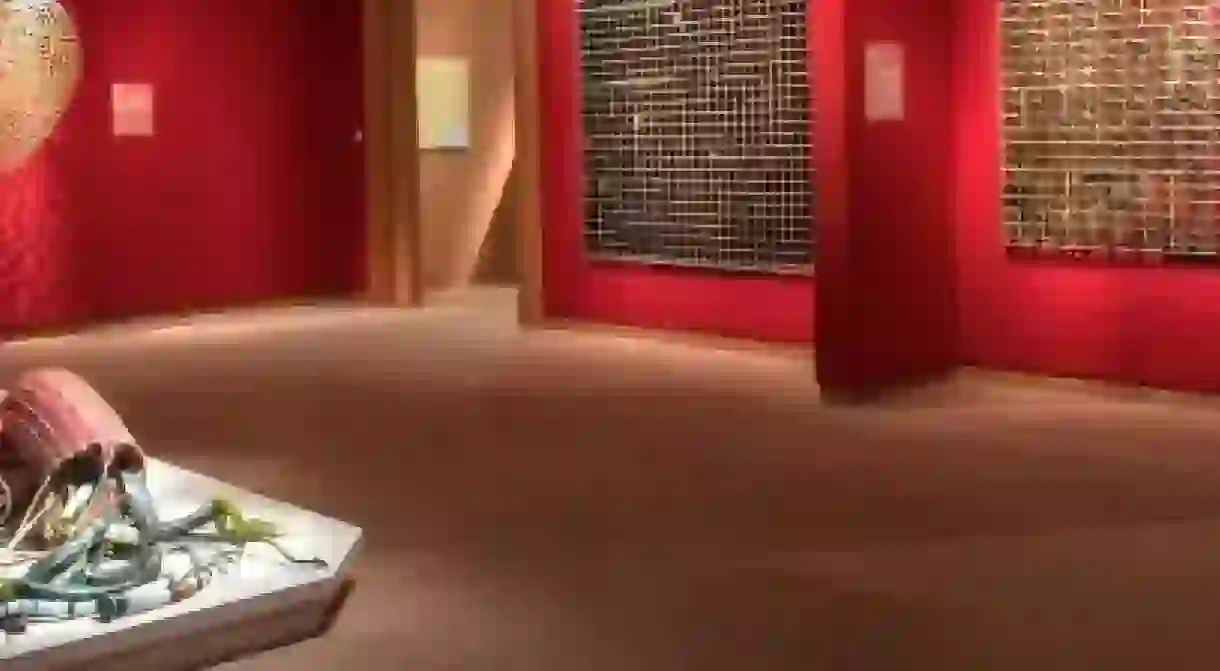Interview with Cambodian Artist Sopheap Pich: Sculpting with Bamboo

Sopheap Pich, one of Cambodia’s most internationally recognized artists, creates sculptures from locally sourced materials. Culture Trip interviewed Pich to find out more about his transition from painter to sculptor, the process he uses for each piece and his views on the current art scene in the Kingdom of Cambodia.

Sopheap Pich was born in Battambang, Cambodia in 1971 and earned his MFA in painting from the The School of the Art Institute of Chicago in 1999. Pich’s work has been shown widely across the world including the Moscow Biennale (2013), Documenta (2012), the Asian Art Biennial (2011), the Singapore Biennale (2011) and a highly acclaimed solo show at the Metropolitan Museum of Art during the Season of Cambodia Festival (2013). His work is found in many top-tier museum collections, including the Centre Georges Pompidou, the Metropolitan Museum of Art, the Singapore Art Museum and the Solomon R. Guggenheim Museum.
You’re known as a sculptor, but you started out as a painter. What aspects of working in 3D appeals to you?
Making a three-dimensional object is different for me in that I am making something real as opposed to making a kind of illusion on a flat surface. Also, starting with my first sculpture, it was the physical aspect of the activity that had its own urgency and movement – something that painting did not give me.

You were a pre-med student before you decided to become an artist. How does your knowledge of anatomy and botany extend to your artwork?
This is evident in the appreciation of form that is hidden or under the surface. I started my first group of sculptures with body organs as models. I liked how these organs didn’t have ‘expressions’ and it was up to the sculpture (how it was made, the materials I used) to give them expression.
How did moving back to Cambodia in 2002 shape your artwork and determine the materials you chose to work with?
After I arrived, I felt it was the right place and time to be an artist without any strings attached. As a sculptor, having accidentally stumbled on rattan, bamboo and metal wire as my main materials, I sensed I was free from the art history that I knew. Working slowly, I gave up notions of what the final work should be like and what the forms meant. I was concentrating on learning how to build a sculpture and testing my ability to bring something to the finished work.
I’ve heard you say that there’s a certain ‘joy’ when you work with bamboo and rattan. What is it about these materials that resonates so strongly with you tactilely and visually?
I started to work with rattan and bamboo with very basic tools: a few razor blades, a butcher’s knife, an axe, some pliers and a cutting board. It was as though I was a kid again making slingshots and clay marbles; making toy boats and small arrows. They were the stuff of childhood memories. To make something was, at one point in my life, both therapeutic and necessary.

What is the step-by-step process that the bamboo or rattan goes through before it is woven into a sculpture? Has this process changed over the years?
The preparation of the bamboo and rattan is still the same: with rattan, we get a big amount from a rattan dealer (we choose the most mature from the pile). We then clean by scraping the joints. Next, we boil it in bundles in our custom-made tank with diesel oil. We let the rattan dry for about a week and then we split each stem into four strands before we shave it with small utility knife blades to get the strands we use to make the sculptures.
We do the same with bamboo but we don’t boil it in diesel oil. Instead, we just use water. We used to go to the provinces to cut the bamboo ourselves (and we still do sometimes) but most of the time we also get our bamboo in bulk from a dealer.
Do you think that artists who have witnessed a difficult historical time or event are more likely to revisit or examine that subject in their artwork, than those who are born one or two generations after the event? Have you seen this in your work and that of the emerging generation of Khmer artists?
I am not sure if it is ever a conscious decision to revisit the past with painting and sculpture. I think this is maybe more true with film, music or poetry. I’ve always thought that my medium has its own history, laws, and rules and is in me – these factors influence what and how I make my work. As a Cambodian-born artist, having lived through the Khmer Rouge and as a refugee afterwards, I think it is obvious to me that those experiences would find their way into my work.

You moved to Cambodia when the country was still recovering from Pol Pot’s regime. Has the contemporary art scene in Cambodia changed since you first arrived?
The scene is developing. I don’t think of it as a change so much as there are more young artists who think there is a place for them in the arts. There’s also a strong sense that they want to express their ideas about their surroundings and situations. Access to a camera and places to exhibit their work also play an important part in their decision to be an artist.













